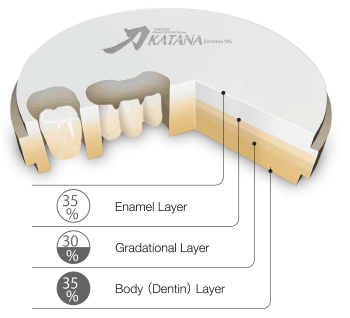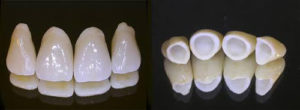Advantages and Disadvantages of Zirconia Crowns
CAD CAM Cerec bridge video
April 16, 2017Color in Dentistry
October 1, 2017Advantages and disadvantages of Zirconia Crowns
The new era of dental materials is flourishing and much has to do with the advantages and disadvantages of Zirconia Crowns. Zirconia is an extremely strong and hard materiel, close to 1200 Mpa, compared to a traditional full porcelain crown at 250mpa. We measure in MPA’s or mega pascals. It is white and relatively opaque. So it is a great replacement for the previous metal that was used as a base underneath PFM’s, or porcelain fused to metal crowns. PFMs, were the standard of esthetic dentistry for the last 60 years or so.
Advantages and disadvantages of Zirconia Crowns
We are all familiar with the white crowns, that were relatively opaque, sometimes you saw a little metal sticking out at the gum line, causing a dark area at the neck of the tooth. These teeth were also often opaque and not terribly natural. This was because the metal had to be hidden by an opaque white color, so as not to see greyish in the crown.One problem was that the porcelain can chip off of the outside of the crown revealing an ugly grey color.
a little metal sticking out at the gum line, causing a dark area at the neck of the tooth. These teeth were also often opaque and not terribly natural. This was because the metal had to be hidden by an opaque white color, so as not to see greyish in the crown.One problem was that the porcelain can chip off of the outside of the crown revealing an ugly grey color.
Zirconia crowns have overcome these problems. The zirconia comes either in small blocks that can be milled in a CEREC machine, or, as one of the few dentists in Israel with a Sirona Inlab system in my office, I can mill large restorations out of a puck of zirconia. Zirconia in its raw form is chalky. We mill it dry, and it needs to be put into an oven for 12 hours to sinter, or become hard. But once hard it is strong, tough and very exact in terms of its fit. One of advantages and disadvantages of Zirconia Crowns is that they are brittle. So we must be careful when adjusting the so as not to cause microscopic  cracks which can lead to failure. All in all it is an amazing material and the advantages and disadvantages of Zirconia Crowns are far outweighed by the advantages.
cracks which can lead to failure. All in all it is an amazing material and the advantages and disadvantages of Zirconia Crowns are far outweighed by the advantages.
Click Here For Before And After Pictures